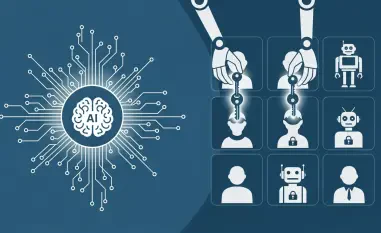Introduction to the .NET Bounty Program
Imagine a digital landscape where vulnerabilities in widely used frameworks like .NET could compromise countless applications and systems worldwide, exposing sensitive data to cyber threats. This scenario underscores the critical need for robust security measures in software development, especially for platforms that power a vast array of enterprise and personal solutions. Microsoft’s .NET Bounty Program stands as a pivotal initiative in this battle against cyber risks, designed to fortify the security of the .NET ecosystem through community collaboration.
The purpose of this program is to incentivize security researchers to identify and report vulnerabilities in .NET and related technologies, thereby enhancing the overall safety of these platforms. By addressing potential flaws before they can be exploited, Microsoft aims to protect developers and end-users alike. This article delves into frequently asked questions about the program, exploring its structure, benefits, and impact on the tech community.
Readers can expect to gain a comprehensive understanding of how the initiative operates, the rewards offered for various types of vulnerabilities, and the broader implications for software security. Through detailed answers and insights, the goal is to illuminate the significance of such programs in fostering a safer digital environment. This discussion sets the stage for a deeper look into specific aspects of the .NET Bounty Program.
Key Questions About the .NET Bounty Program
What Is the .NET Bounty Program and Why Is It Important?
The .NET Bounty Program is a strategic effort by Microsoft to enhance the security of its .NET framework and associated technologies like ASP.NET Core. In an era where cyber threats are increasingly sophisticated, ensuring the integrity of foundational software platforms is paramount. This program encourages security researchers to uncover vulnerabilities, offering monetary rewards as an incentive for their contributions to a safer tech ecosystem.
The importance of this initiative lies in its proactive approach to identifying weaknesses before malicious actors can exploit them. By engaging a global community of experts, Microsoft taps into diverse perspectives and skills to address potential risks across a wide range of applications. Such collaboration is essential for maintaining trust in software that underpins critical business and personal operations.
This program’s relevance extends beyond immediate fixes, as it fosters a culture of vigilance and continuous improvement in software development. It highlights the shared responsibility between companies and independent researchers to safeguard digital infrastructure. Understanding its purpose helps clarify why Microsoft invests significantly in this area.
How Have the Reward Structures Changed in the Program?
Recent updates to the .NET Bounty Program have introduced a substantial increase in monetary rewards for security researchers. For critical-severity vulnerabilities such as remote code execution (RCE) or elevation of privilege (EoP) flaws, comprehensive reports can now earn up to $40,000. Other significant rewards include up to $30,000 for security bypass issues and up to $20,000 for problems like remote denial-of-service (DoS) or information disclosure.
For submissions classified as “not complete”—those without fully functional exploits—the rewards are adjusted accordingly. Critical RCE, EoP, and security bypass flaws cap at $20,000, while incomplete DoS reports may earn up to $15,000, and other categories like spoofing or tampering are limited to $7,000. This tiered structure ensures that the depth and usability of a report directly influence the payout, encouraging detailed submissions.
These changes reflect a strategic intent to prioritize high-impact discoveries that pose the greatest risk if left unaddressed. By aligning rewards with the severity and completeness of findings, Microsoft motivates researchers to provide actionable insights. This approach not only boosts participation but also enhances the quality of vulnerability reports submitted.
Which Technologies Are Covered Under the Expanded Scope?
The scope of the .NET Bounty Program has been broadened to encompass all supported versions of .NET and ASP.NET, ensuring comprehensive coverage across these platforms. This includes technologies such as F#, supported ASP.NET Core for .NET Framework versions, as well as templates and GitHub Actions within the .NET and ASP.NET Core repositories. Such an expansive reach addresses vulnerabilities in a diverse set of tools and environments.
This expansion is crucial because it acknowledges the interconnected nature of modern software ecosystems, where a flaw in one component can ripple across multiple systems. By including a wider array of technologies, Microsoft ensures that potential threats are identified and mitigated regardless of where they reside within the .NET framework. This holistic approach strengthens the overall security posture.
Understanding the range of covered technologies helps researchers focus their efforts on relevant areas, maximizing the program’s effectiveness. It also demonstrates Microsoft’s commitment to protecting every facet of its development tools, from core frameworks to supplementary components. This inclusivity is a key factor in building a robust defense against cyber risks.
What Improvements Have Been Made to the Evaluation Process?
Significant enhancements to the evaluation and rewarding process have been implemented to increase transparency and fairness in the .NET Bounty Program. Clearer guidelines on severity levels, security impacts, and report quality criteria have been established, ensuring that researchers understand how their submissions will be assessed. This clarity helps set expectations and streamlines the review process.
Rewards are now determined based on the potential impact of a vulnerability, with higher-severity issues receiving larger payouts to reflect their importance. Additionally, the alignment of security impact types with those used in other Microsoft bug bounty programs provides consistency for participants familiar with these systems. Such standardization simplifies the submission experience for seasoned researchers.
A notable aspect of the updated process is the categorization of reports as “complete” or “not complete” based on the inclusion of functional exploits. This distinction encourages detailed and practical findings, as comprehensive submissions are rewarded more generously. These improvements collectively aim to foster trust and efficiency in how vulnerabilities are handled and rewarded.
How Does the Program Contribute to Overall Security?
The .NET Bounty Program plays a vital role in enhancing the security of Microsoft’s development platforms by incentivizing the discovery of critical vulnerabilities. By offering substantial rewards, it attracts skilled researchers who bring fresh insights and expertise to the table, helping to identify threats that might otherwise go unnoticed. This collaborative effort is a cornerstone of proactive cybersecurity.
Beyond immediate vulnerability fixes, the program promotes a culture of accountability and continuous improvement within the tech community. It prioritizes actionable, high-impact submissions over theoretical issues, ensuring that resources are directed toward the most pressing risks. This focus helps create a more secure environment for developers and users who rely on .NET technologies daily.
The broader implication of this initiative is the reinforcement of trust in software ecosystems through structured incentives and transparent processes. By engaging with the research community, Microsoft demonstrates a commitment to safeguarding its platforms against evolving threats. This partnership model serves as a blueprint for how companies can leverage external expertise to bolster digital security.
Summary of Key Insights
The .NET Bounty Program stands as a testament to Microsoft’s dedication to fortifying the security of its software frameworks through community engagement. Key points include the significant increase in rewards, with up to $40,000 for critical vulnerabilities, and an expanded scope covering all supported versions of .NET and ASP.NET Core. Additionally, improvements in the evaluation process ensure transparency and fairness in assessing submissions.
The main takeaway is that structured incentives and clear guidelines drive high-quality vulnerability reports, ultimately enhancing the safety of the .NET ecosystem. This initiative highlights the value of collaboration between corporations and independent researchers in addressing cyber threats. It also emphasizes the importance of prioritizing actionable findings to mitigate the most severe risks.
For those interested in delving deeper, exploring Microsoft’s official bug bounty resources or related security blogs can provide further details on participation and submission criteria. Engaging with these materials offers a pathway to understanding the broader landscape of software security initiatives. Such resources are invaluable for staying informed about evolving practices in this critical field.
Final Thoughts on the Initiative
Reflecting on the journey of the .NET Bounty Program, it becomes evident that Microsoft’s strategic updates mark a significant step forward in combating digital vulnerabilities. The enhanced rewards and expanded technological coverage showcase a determined effort to stay ahead of cyber threats. This initiative proves that collaborative approaches can yield substantial improvements in software safety.
Looking ahead, stakeholders are encouraged to consider participating in or supporting similar bounty programs to contribute to a more secure tech landscape. Exploring opportunities to engage with such initiatives can offer practical ways to enhance personal or organizational cybersecurity practices. Taking an active role in these efforts is seen as a meaningful way to address emerging challenges.
The broader impact of these programs suggests a future where community-driven security efforts could become a standard in software development. Embracing this model holds the potential to create resilient systems capable of withstanding sophisticated attacks. This vision underscores the importance of sustained investment in collaborative cybersecurity solutions.













